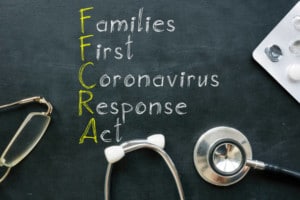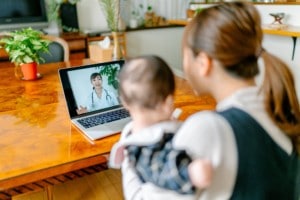The Total Absence Management Team (TAM) at The Partners Group is excited to introduce our new quarterly compliance newsletter. Featured content will include leave and disability state and federal legislative updates, case law, and announcements on helpful webinars, conferences, and so on.
We anticipate the newsletter will evolve over time so thanks for joining the ride, we hope you find the content useful and have some fun along the way! As always, please reach out to your account manager with any additional regulatory questions or concerns.
FEDERAL UPDATES
 Families First Coronavirus Response Act
Families First Coronavirus Response Act
In March 2020, lawmakers did something unprecedented – they passed BIPARTISAN legislation in four days. FOUR DAYS! And as a result, we learned a new acronym and from the dates of April 1, 2020, through December 31, 2020, the FFCRA required certain employers to provide employees with paid sick leave and expanded family and medical leave for specified reasons related to COVID-19.
Beginning January 1, 2021, employers were given the option to voluntarily provide paid sick and family leave to employees through March 31, 2021, and take advantage of the FFCRA tax credit.
So now what? Well, FFCRA is off the table under Biden’s American Recovery Act. However, under the 628-page American Rescue Plan signed by President Biden on March 11 (number of times this section had to be rewritten before publish: only 2! #winning), if your private-sector business has fewer than 500 employees, you can continue to voluntarily provide the FFCRA leave through 9/30/21 and collect tax credits.
FFCRA version 3.0 (or maybe version 784, but who’s counting?) has some enhancements (or “glow ups” for you Gen Z’ers) such as tax credit increases, a new bucket of emergency paid sick leave (reset April 1, 2021) and additional leave reasons (time off for vaccines and/or subsequent reactions). Per usual, I expect the DOL to publish updated FAQs well after we need them so in the meantime, here is a link to a helpful article.
FMLA
 FMLA/Telehealth Section
FMLA/Telehealth Section
Recognizing the realities of social distancing and remote workplaces, on December 29, 2020, the DOL issued two Field Assistance Bulletins (FABs) and made clear that a telemedicine visit with a healthcare provider can be used to support FMLA leave. As you may recall, one way for an employee to prove they have a serious health condition is to attend an in-person visit with a healthcare provider within seven days of the first day of incapacity. However, the pandemic has put a clamp on the ability to attend in-person visits with a physician, as medical offices across the country turned to telemedicine. The FAB states that a telemedicine visit may qualify as an “in-person visit” for purposes of the FMLA if the following criteria are met: (1) the telemedicine visit must include an examination, evaluation, or treatment by a healthcare provider; (2) the telemedicine visit is permitted and accepted by state licensing authorities; and (3) generally, the telemedicine visit should be performed by video conference. Communications such as “a simple telephone call, letter, email, or text message” remain insufficient to satisfy the requirement of an “in-person visit.” With regards to the third point, you may find yourself asking what “generally” means because I “generally” take a shower every day and “generally” brush my teeth. Well, during Day 1 of this year’s DMEC Compliance Conference, I heard straight from the DOL that “generally” by video conference was intentional due to unavoidable issues such as the video feed crashing, what occurs with rural communities due to access issues, etc. At the end of the day, the DOL wants you to look at this on a case-by-case basis and technology issues should be given some grace when all other requirements are met.
The second FAB addresses electronic FMLA postings. Traditionally, covered employers must “post and keep posted” a notice explaining the FMLA and provide information about the procedures for filing complaints of violations with the DOL. The notice must be posted “prominently” where it can be “readily seen” by employees and applicants. Now, the DOL will consider electronic posting to satisfy the requirements where there is no physical establishment at which employees are employed or interviewing or hiring takes place, and the electronic posting is always accessible to employees and applicants. For employers with workers split between on-site and remote work, the FAB suggests both hard-copy and electronic posting. If you are looking for an FMLA poster, look no further!
STATE UPDATES
California
On November 30, 2020, Cal/OSHA enacted COVID-19 Emergency Temporary Standards which required, among other things, an employer pay an employee exclusionary pay if excluded from work, available to work, and COVID exposure is work-related. There was question at the time regarding Cal/OSHA’s authority to require employers to provide exclusionary pay. To the shock of no one, the emergency regulations were challenged and in March, the entirety of the challenge was rejected. The judge provided opinion that speaks directly to the exclusionary pay and explained “The Board found that this paid leave provision is necessary to limit transmission of COVID-19 in the workplace. Toward this end, it is important that employees who are COVID-19 cases or who had exposure to COVID-19 do not come to work. Maintaining employees’ earnings and benefits when they are excluded from the workplace is important in ensuring that employees will notify their employers if they test positive for COVID-19 or have an exposure to COVID-19, and stay away from the workplace during the high-risk exposure period when they may be infectious.” This may be appealed, but for now, make sure your organization is up to speed on the requirements of the exclusionary pay. A link to the FAQs can be found here.
California Family Rights Act was expanded effective January 1, 2021. Notable callouts are the expanded definition of family member and employer coverage (5 employees within the United States). Many small employers previously exempt from providing CFRA are now required to offer the statutory entitlement to employees. A link to detailed expansion here.
*It will be a cold day in h-e-double hockey sticks when there is not a legislative update on California.
Oregon
Oregon will now provide state-paid leave for employees who need to quarantine or isolate because of COVID-19 exposure or are experiencing symptoms, but do not qualify for COVID-19-related paid sick leave or do not have access to COVID-19-related paid time off. This was previously a temporary rule scheduled to expire on March 13. The rule is effective March 14, 2021, and eligible workers will receive a $120-per-day payment for up to 10 working days for the time needed to quarantine or isolate.
Massachusets
Massachusetts Paid Family and Medical leave benefits went live on January 1, 2021, making it the seventh state (plus Washington, DC) to offer such benefits. A link to the employer guide can be found here. Another fun fact about Massachusetts? It is apparently illegal to put tomatoes in clam chowder.
On deck are Connecticut, Oregon, and Colorado.
CASE LAW
“Whenever I’m about to do something, I think, ‘Would an idiot do that?’ And if they would, I do not do that thing.” – Dwight Schrute, The Office
Now that we have your attention, this is where we will discuss notable case law and/or painful lessons learned.
Burnett v. Ocean Properties, LTD; Ameriport, LLC.
Mr. Burnett is a paraplegic using a wheelchair who worked in a call center. The entrance to the call center included heavy doors that pulled outward and then automatically closed. The entrance also included a downward slope resulting in Mr. Burnett’s wheelchair to roll backwards as the door closed. As a result, Burnett needed to exert greater force as he struggled to enter. Mr. Burnett requested the accommodation of push-button automatic doors.
And what did the employer do in response to this commonsense request you ask? Well, they confirmed amongst themselves the doors were ADA compliant upon installation and nothing else. Meanwhile, Mr. Burnett sustained an injury while trying to navigate his entry into the call center. Mr. Burnett reported the injury to a supervisor, but again, no follow-up on the initial request for the automatic doors. Understandably, Mr. Burnett filed a disability discrimination lawsuit and was awarded $650k in damages.
Key Takeaways
- If your employee makes a request for accommodation, FOLLOW UP. Remember, an employee’s request for accommodation may not be in flashing lights and requests are not required to be formal. Accommodation needs may be casually mentioned in workplace conversations. Whether they are formal requests like the one above, or an informal mention, employers have an obligation to engage in the interactive process with their employees.
You can read the full case text here.
DID YOU KNOW?
As of December 31, 2020, the Department of Labor had conducted 4,200 Families First Coronavirus Response Act investigations and identified over $4m owed in back wages to over 3,500 employees. In other words, carry on warriors and keep those noses to the grindstone in ensuring your organization stays compliant.
